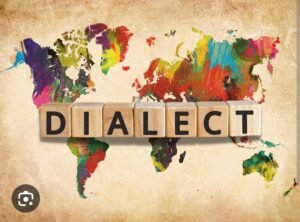
Photo Credit: tlctranslation.com
When we think about how we communicate, the first thing that comes to mind is language. It’s the tool that allows us to share our thoughts, ideas, and emotions with others. However, within the realm of language, there are also dialects, which can significantly change how we understand and use a given language. In this blog post, we will delve into the fascinating world of dialects and languages, exploring their similarities, differences, and the gray areas in between.
Let’s start with the basics. A language is a complex system of communication that uses symbols – in most cases, words – in a structured and conventional way. Languages allow us to express abstract thoughts and to convey information, and they typically include a set vocabulary and rules for grammar and syntax.
Currently, there are estimated to be over 7,000 languages spoken around the world today. These languages can vary significantly from one another, with differences in sound, grammar, vocabulary, and even in the way they convey information. For example, English and Mandarin Chinese do not just differ in their words and sounds, but also in how they convey ideas and structure sentences.
Now that we’ve defined language, let’s move on to dialects. A dialect is a variation of a language that is specific to a certain region or group of people. It includes variations in pronunciation, grammar, vocabulary, and syntax, and can sometimes be so different from the standard form of the language that it may be difficult for people from different regions to understand each other.
For instance, English is spoken in many parts of the world, but the dialect of English spoken in Scotland can be quite different from the English spoken in the United States, to the point where a speaker of one may struggle to understand the other.
So, we have our definitions, but in practice, the line between a dialect and a language can often be blurred. The saying goes, “A language is a dialect with an army and a navy,” implying that political and cultural factors often play a significant role in determining what gets classified as a language versus a dialect.
Consider Chinese, for instance. Mandarin and Cantonese are often referred to as dialects of Chinese, but they are so different from each other that a speaker of Mandarin would not understand Cantonese, and vice versa. They have different vocabulary, grammar, and pronunciation, to the point that they could be considered separate languages. However, because they share a common written system and cultural identity, they are often classified as dialects of a single Chinese language.
Understanding the difference between dialects and languages is more than just an academic exercise. It can have real-world implications in fields like education, law, and social policy. For instance, recognizing a variety of speech as a dialect rather than a separate language can impact how it’s taught in schools, how its speakers are represented in the media, and how they are treated by the legal system.
On a more personal level, understanding this difference can help us better appreciate the rich diversity of human language. Every dialect represents a unique history, culture, and way of thinking, and recognizing this can help us better understand and respect our own linguistic heritage, as well as that of others.
In conclusion, while languages and dialects are both systems of communication, they differ in their scope and usage. A language is a broad system that allows for communication and expression, while a dialect is a regional or cultural variation of a language. However, the line between the two can be blurred, and often depends on social, political and cultural factors, rather than purely linguistic ones. By understanding these differences, we can better appreciate the rich tapestry of human communication, and the role that both languages and dialects play in our world.
Source: WordsTrivia.com


